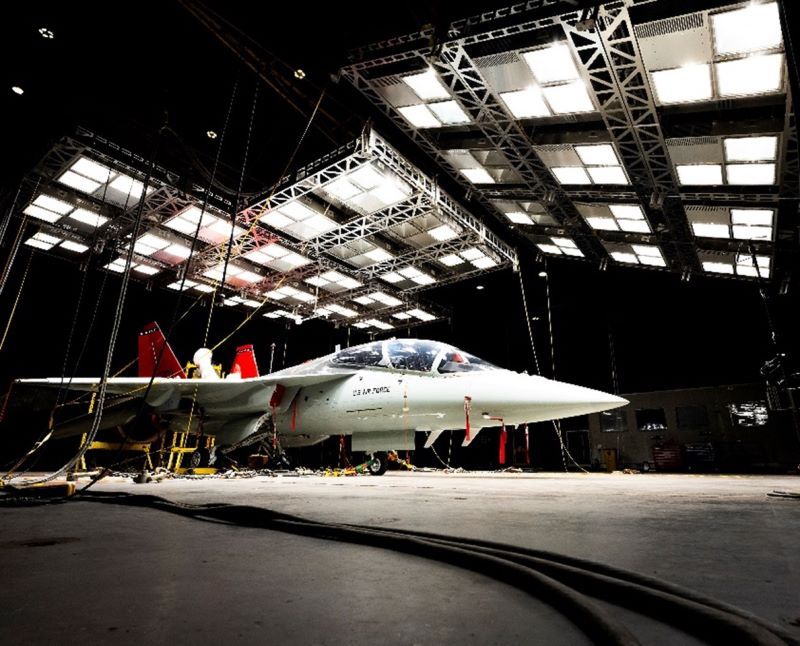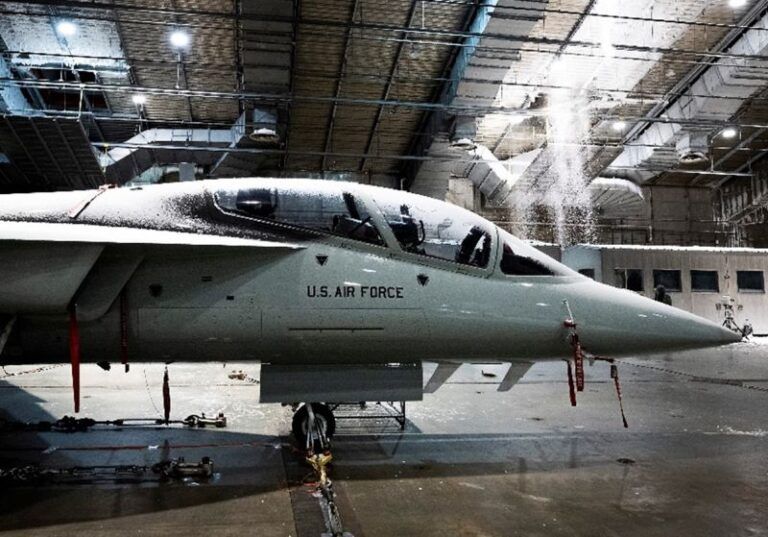Boeing’s T-7A Red Hawk has achieved three recent test and development milestones, as the US manufacturer progresses towards the advanced pilot trainer’s introduction for the US Air Force.
The US Air Force awarded Boeing a US$9.2 billion contract for 351 T-7A advanced trainers, 46 simulators and support in 2018. The T-7A will replace the Air Force’s aging T-38 aircraft.
The T-7A was developed using digital modeling and design techniques and went from concept to first flight in 36 months. The aircraft incorporates open architecture software, digital fly-by-wire controls and cockpit technology that provide improved levels of safety and training for future fighter pilots.
In a statement Boeing reports that the aircraft has recently passed Climate Chamber testing. T-7A aircraft APT-3, one of five engineering and manufacturing development aircraft, underwent climate testing at Eglin Air Force Base, enduring temperatures ranging from -25°F to 110°F.

The test evaluated the aircraft system’s performance, including propulsion, hydraulic, fuel, electrical, secondary power, environmental control, and overall operations in extreme environmental conditions. The aircraft has since returned to St. Louis for testing.
The T-7A’s escape system has also been put through its paces with a dynamic sled test in February at Holloman Air Force Base in New Mexico. The test focused on design enhancements in the Collins Aerospace-made ACES 5 ejection seat and Pacific Scientific EMC’s canopy fracturing system to reduce the risk of injury.
During the test, the team implemented variable timing to slow down the ejection seat, using the drogue chute and investigated canopy fracturing system patterns. The team is now preparing to move forward with the next round of development testing.
Finally, Boeing completed development in February of a new software flight control law and since then has flown the aircraft more than ten times, reaching 25-degree angle of attack.
Additionally, three of those flights demonstrated the aircraft’s ability to achieve fine tracking while in a high angle of attack, a key capability for pilot training. Incorporation of control law 17.5 clears the path for the Air Force to start high angle of attack and departure resistance testing at Edwards Air Force Base.
“The T-7A Red Hawk is poised to revolutionize pilot training, delivering enhanced safety, performance and adaptability, and completing these three milestones shows significant progress in the program’s development,” said Evelyn Moore, vice president and program manager, T-7 Programs. “We will continue with flight testing and the next round of escape system testing throughout this year and into 2025.”
Boeing is building a new production line for low-rate initial production (LRIP) of the T-7A. The company is slated to load the first forward and aft fuselages for LRIP midyear as suppliers are already underway developing parts for production.





